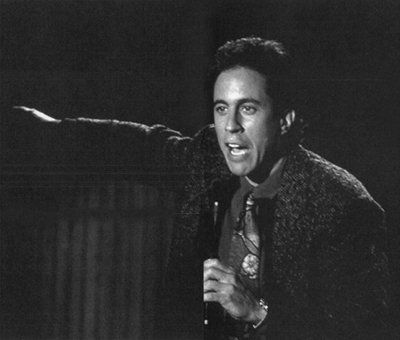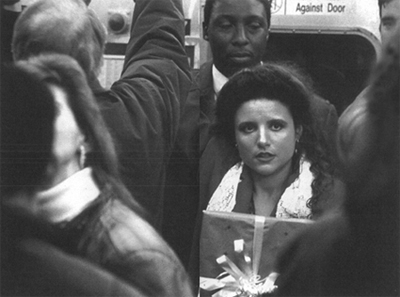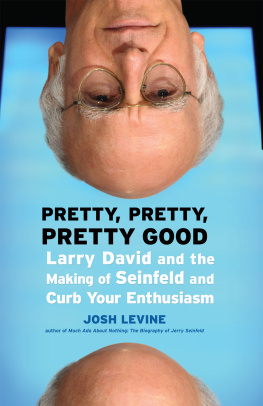Copyright 1993 by Entertainment Weekly Inc.
All rights reserved.
Hachette Book Group
237 Park Avenue
New York, NY 10017
First eBook Edition: September 2009
ISBN: 978-0-446-56715-2
COVER photographed for EW by Bonnie Schiffman/Onyx
BACK COVER photographed for EWby Gregory Heisler
STILL LIFE photographs by Anthony Verde
: Gino Mifsud
: Jan Sonnenmair
: Spike Nannarello
:Bettmann
: Photograph by Bonnie Schiffman/Onyx
: Paul Drinkwater
: Globe Photos
: Photograph by Bonnie Schiffman/Onyx
: Terry Smith
:Photofest
:Photofest
: Emilio Lari
:Bettmann
: Bettmann
: Murray Close
: Eddie Adams
: Jacques Haillot/Globe Photos
: Photograph by Bonnie Schiffman/Onyx
: Greg Schwartz
: Bettmann
: Walter Zurlinden/Globe Photos
: UPI, Globe Photos
: Bob Greene
:Greg Schwartz/Photofest
: Globe Photos
:Jane Bown/Globe Photos
: Photograph by Bonnie Schiffman/Onyx
: Bettmann
: Michael Yarish
: Globe Photos
: Paul Drinkwater
: Ted Horowitz/The Stock Market
: Wayne Williams
: Alice S. Hall
:Carin Baer
:Photofest
:McCliment/Silver
: Chris Haston
Tweety character TM & Warner Bros. 1993. Used under license by Pez Candy, Inc.
To
M. E. H.
Thanks to the following ENTERTAINMENTWEEKLYstaffers: Beth Arky, Alice H. Babcock, Martha K. Babcock, Sue Barnett, Ray Battaglino, George L. Beke, Annabel Bentley, Robin Bierstedt, Paul Bodley Jr., Gerald Burke, Joanne Camas, Kevin Christian, Evan J. Dong, Stacie Fenster, Alison Gwinn, Susan Isaak, Robert Kanell, Robert D. Kennedy, Bill Lazzarotti, Carlos Lema, Mary Makarushka, Carol A. Mazzarella, Steven Moonitz, Donald Morrison, Lisa DiSapio Motti, David Nagler, Sean OHeir, Tom Roemlein, Michael T. Rose, Rachel Sapienza, B J. Sigesmund, Marlena Sonn, Daneet Steffens, Daniel C. Thompson, and Ken Tucker.
Special thanks to Barbara Denler, Ann Finnegan, Steve Freeman, Brian Healy, Irv Kagan, Larry Karpen, Deneen Kelleghan, Karen Kelly, Jill Neal, Jose Romano, and Bob Warznak.
SOMETHING ABOUT NOTHING
F ANS OF SEINFELD have mysterious ways of finding each other. Mulva! one stranger might exclaim to another. Snapple! These pretzels are making me thirsty! This is, of course, coded communication, a quizzing of sitcom sensibilities. It might as well be a measure of worldviews, a cultural litmus test. Because true Seinfeld enthusiasts know that appropriate responses include Delores! Junior Mints! Not that theres anything wrong with that!
And everybody else is off watching Coach.
The Seinfeld devotee appreciates that no other sitcom in television history has made such inventive, idiosyncratic use of words, labels, brand names, and pop-culture references. No other TV comedy has experimented as daringly with the witty possibilities of language on a medium that traditionally relies heavily on physical action for easy laughs. On Seinfeld, open-ended conversation among characters who have nothing to gain in terms of plot development is its own reward.
Is it any wonder that Seinfeld took so long to catch on?
Now that the show is widely regarded as network televisions most innovative sitcom and its offbeat cast members have become full-fledged celebrities whose faces sell hair-care products and credit cards, one can easily forget that the show did not get off to a robust start when it premiered on NBC, first as an inauspicious one-shot in 1989, then as a five-episode series (which included a repeat of the pilot) in the summer of 1990. The stories hinged on the underachiever lives of then-36-year-old stand-up comedian Jerry Seinfeld and three fictional friends in Manhattan, and the idea was to show how the little observed details of daily urban living wove their way into Jerrys stand-up monologues, which punctuate each episode. With this premise, so low-key as to be nearly motionless, ratings were underwhelming (it was, dont forget, the summer). But a core population of viewers (and network executives) loved what they saw, and in the fall the series was renewed as a midseason replacement.

JERRY: His stand-up routines reflect the characters everyday lives
Still, Seinfeld did not experience a rousing rebirth when it returned in January of 1991. Nor when it was jiggered from day to day, timeslot to timeslot, over the next two years. In fact, some 50 episodes came and went, during which time Jerry, ex-girlfriend Elaine Benes (Julia Louis-Dreyfus), best friend George Costanza (Jason Alexander), and apartment neighbor Kramer (Michael Richards) did nothing much of anythinghilariously. But meanwhile word of mouth spread, audience attachment grew, women began to pouf their hair like Elaines sexy modified Gibson girl coif, and men placing personal ads in the classified sections of reputable journals began to list themselves as Seinfeld look-alikes.
And then something remarkable happened: In February 1993, NBC shifted the show from Wednesday nights (where it had sulkily battled ABC ratings blockbuster Home Improvement for viewers) to Thursdays. And the small, vociferously devoted audience that had followed Seinfeld through six different schedule changes in four years suddenly burgeoned into a large, vociferously devoted horde. The show immediately jumped from 40th place to 10th before settling confidently into the middle of the top 10 list. And the series officially became the comic phenomenon its supporters always knew it was.
FROM THE VERY BEGINNING, Seinfeld has attracted a passionately proprietary viewershipTV-literate, demographically desirable urbanites, for the most partwho look forward to each weekly episode in the Life of Jerry with a boomer generations self-involved eagerness not seen since the height of thirty something in the 80s. To be a fan of Seinfeld is to join a cool club where bits of dialogue serve as secret passwords; to fully appreciate the shows unerringly neurotic heart is to understand that nothing on earth is as satisfying, as meaningful, as funny, or as important as sitting around with a couple of friends, wisecracking, squabbling, snacking, and otherwise putting off getting on with life.

ELAINE:Shes the only one of the four who works a regular job
Seinfeld makes sloth, lust, envy, and passive-aggression look like time well spent because, as the mantra now goes, Seinfeld is ostensibly about Nothing. As conceived by Jerry Seinfeld (who had logged 16 years on the road as a professional stand-up comic before the series was launched) and his friend and cocreator Larry David (whose own stand-up career was hampered in no mall part by his propensity to berate the audience when they didnt laugh at is jokes), the sitcom is based on the tiniest air currents of cosmic disturbancelosing ones car in a parking lot, waiting in line for a movie, picking ones nose (or was it merely scratching?), eating chips with dip after the funeral of a girlfriends aunt. These are the small-scale activities that fill ones time when one is not off, say, tending a bar in Boston where everybody knows your name or raising three kids on a blue-collar income in Lanford, Illinois.













